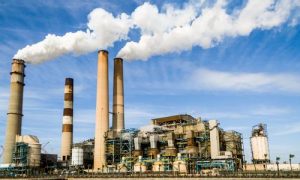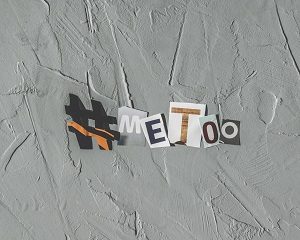
Idea: Copy what works.
Life can be good. We have evidence of this. We’re just not sure how to make it happen. In part, this is because we’re not really sure who “we” are. Will Hutton, writing for the Guardian, talks about Britain, Brexit, and ‘Shit-Life Syndrome.'” He notes that this shit-life syndrome in Britain parallels a lot of the suffering in the U.S. (wherein lower class white folks are starting, more often, to be afflicted with the same problems non-whites have suffered from). Hutton says that the decline in life-expectancy in Britain is starting to look like the worse problems we have in the U.S. A recent study indicates that, in the U.S., “all cause mortality increased… among non-Hispanic whites.” Drug overdoses were the leading cause but mortality also increased for “alcohol-related conditions, suicides and organ diseases involving multiple body systems” (notably liver, heart diseases and cancers).
US doctors coined a phrase for this condition: “shit-life syndrome”. Poor working-age Americans of all races are locked in a cycle of poverty and neglect, amid wider affluence. They are ill educated and ill trained. The jobs available are drudge work paying the minimum wage, with minimal or no job security. They are trapped in poor neighbourhoods where the prospect of owning a home is a distant dream. There is little social housing, scant income support and contingent access to healthcare. Finding meaning in life is close to impossible; the struggle to survive commands all intellectual and emotional resources. Yet turn on the TV or visit a middle-class shopping mall and a very different and unattainable world presents itself. Knowing that you are valueless, you resort to drugs, antidepressants and booze. You eat junk food and watch your ill-treated body balloon. It is not just poverty, but growing relative poverty in an era of rising inequality, with all its psychological side-effects, that is the killer.
Hutton says that white people afflicted with shit-life syndrome are Trump’s base and the core of Brexit supporters. They respond to accusations that their woes are caused by dark foreigners. Meanwhile, suggestions that the Nordic countries have managed to create a system where their citizens are happier and more prosperous are met with dismissive responses about how the countries are communist.
Hutton doesn’t really get into it, but that’s not the only rejoinder about why we can’t have the good life enjoyed in the Nordic countries. There was another column in the New York Magazine by Eric Levitz entitled “Conservatives can’t decide if Nordic Socialism is a totalitarian nightmare or actually capitalist.” Levitz observes that the traditional conservative notion is that the Nordic countries are totalitarian nightmares. As a representative sample, Levitz references a recent piece by Noah Rothman wherein Rothman argues that single-payer healthcare and tuition free access to a university education are pillars of the Soviet Constitution. However, they are also features of Scandinavian government and Rothman apparently feels no need to explain why those ideas lead to the gulag rather than to, say, Denmark.
Democrats may think they “can control the monster they’re bringing back to life,” Rothman writes, but if socialists are given an opportunity to prevail at the polls, Nancy Pelosi and Chuck Schumer “will find themselves prisoners to their party’s collectivists soon enough. After all, taking captives is what socialism does best.”
Levitz can’t resist twisting the knife a little bit by mentioning that the American system is way better at incarcerating its citizens than these socialist countries. At the same time as conservatives are making these gulag-socialism arguments, other conservatives are making incompatible arguments about how Nordic socialism is actually capitalism. According to this version of the argument, ” the real secret of the Nordic country’s success lies in its ‘strong protection of property rights and the integrity of the legal system,’ along with its commitment to free trade, light touch with regulations, and the fact that its ‘labor market is very flexible: there is no legislated minimum wage, and there are few restrictions on hiring and firing.'” Levitz rejoinder to this is that, even if we accept that Denmark’s welfare state isn’t responsible for its strong economic growth, “there’s little question that the country’s aberrantly high levels of social spending are responsible for its exceptionally low levels of relative poverty and income inequality.” Levitz concludes that the implication of this argument is that:
The economic success of the Nordic countries is actually a testament to the vitality of free-market capitalism — because free-market capitalism is (apparently) totally compatible with giant welfare states, nearly universal private-sector unionization, and state-owned oil, telecoms, and financial services companies.
Snark aside, the relative success of the Nordic countries suggests that it’s possible to have substantial wealth transfers from rich to poor without crippling the economy. (Other places, of course, show that wealth transfers can be done in a way that cripples the economy.)
A couple of themes I’ve seen raised in similar contexts that don’t necessarily come up in Hutton or Levitz columns but seem relevant: a) People suffering from shit-life syndrome are lazy and make poor life decisions; and b) the success of Nordic countries has to do with “homogeneous” populations. Here’s the word dropped into a 2015 column by Jeff Jacoby. (Incidentaly, Jacoby goes with the option #2 ‘actually capitalist’ dismissal of Scandinavian socialism.)
The real key to Scandinavia’s unique successes isn’t socialism, it’s culture. Social trust and cohesion, a broad egalitarian ethic, a strong emphasis on work and responsibility, commitment to the rule of law — these are healthy attributes of a Nordic culture that was ingrained over centuries. In the region’s small and homogeneous countries (overwhelmingly white, Protestant, and native-born), those norms took deep root.
The connection between homogeneity and a successful social welfare state is usually left unstated as somehow self-evident, so I have to guess a bit at the rationale. The less charitable interpretation is just straight up racism. “Sure, you can have a successful system where the population is made up of hard-working white people. But, too great a population of the lazy mongrel races will suck us dry.” The not-great but probably more realistic connection between homogeneity and the success of a welfare state is that we’re more likely to feel comfortable spending money on people like us and more likely to resent spending money on people who are not “us.” Racism is probably the biggest stumbling block here. But it’s not the only one — there are other significant cultural divisions that also present challenges. If we think of our fellow citizens as “they” because those citizens look different, it’s going to be tougher to develop consensus about spending money on a strong social safety net. “Helping industrious people like us who are down on their luck is a great idea. Supporting lazy people like them will ruin us.”
So, the homogeneity argument is related to the one where people who suffer from shit life syndrome do so because of laziness and poor life decisions. Why would we spend money to help those who refuse to help themselves? Don’t do drugs! Don’t have kids when you don’t have a job! Don’t have sex out of wedlock! Exercise every day! Don’t buy junk food! Do your homework! Don’t spend your money on luxuries! Don’t smoke! Save more money for retirement! Pay your credit cards off every month! The litany of admonitions is endless. It’s easy to make suffering the result of personal failings. But, as I’ve said many times — and it’s hardly original to me — the economy isn’t a morality play. There are plenty of hard working, sensible poor people; and there are plenty of wealthy people whose wealth is not at all proportional to their personal merit. The fact is that almost none of us are self-made. (Cue the howls of indignation from the people who foamed at President Obama’s unremarkable observation that if you were successful, you had someone help you along the way.)
I’ve never been too comfortable with any one ideology, but I suppose utilitarianism has been more or less my guide when judging whether a public system is good. If your system is mostly making people happy, it’s probably a good one. If your system is mostly making people unhappy, it’s probably a bad one. (But, yes, uncomfortable questions arise if you push this to the extremes. It has to be bounded by individual rights and protection for minority groups.) The success of these Nordic systems seems to be based on giving individuals more opportunity to succeed. It’s probably tougher for an individual to hit the economic jackpot and become a billionaire in the way that the American system makes possible. But, the flip side is that one doesn’t have to beat the odds in order to live a middle class lifestyle which also seems to be increasingly the case under the American system.



 Lindsey Erdody, reporting for the IBJ,
Lindsey Erdody, reporting for the IBJ,